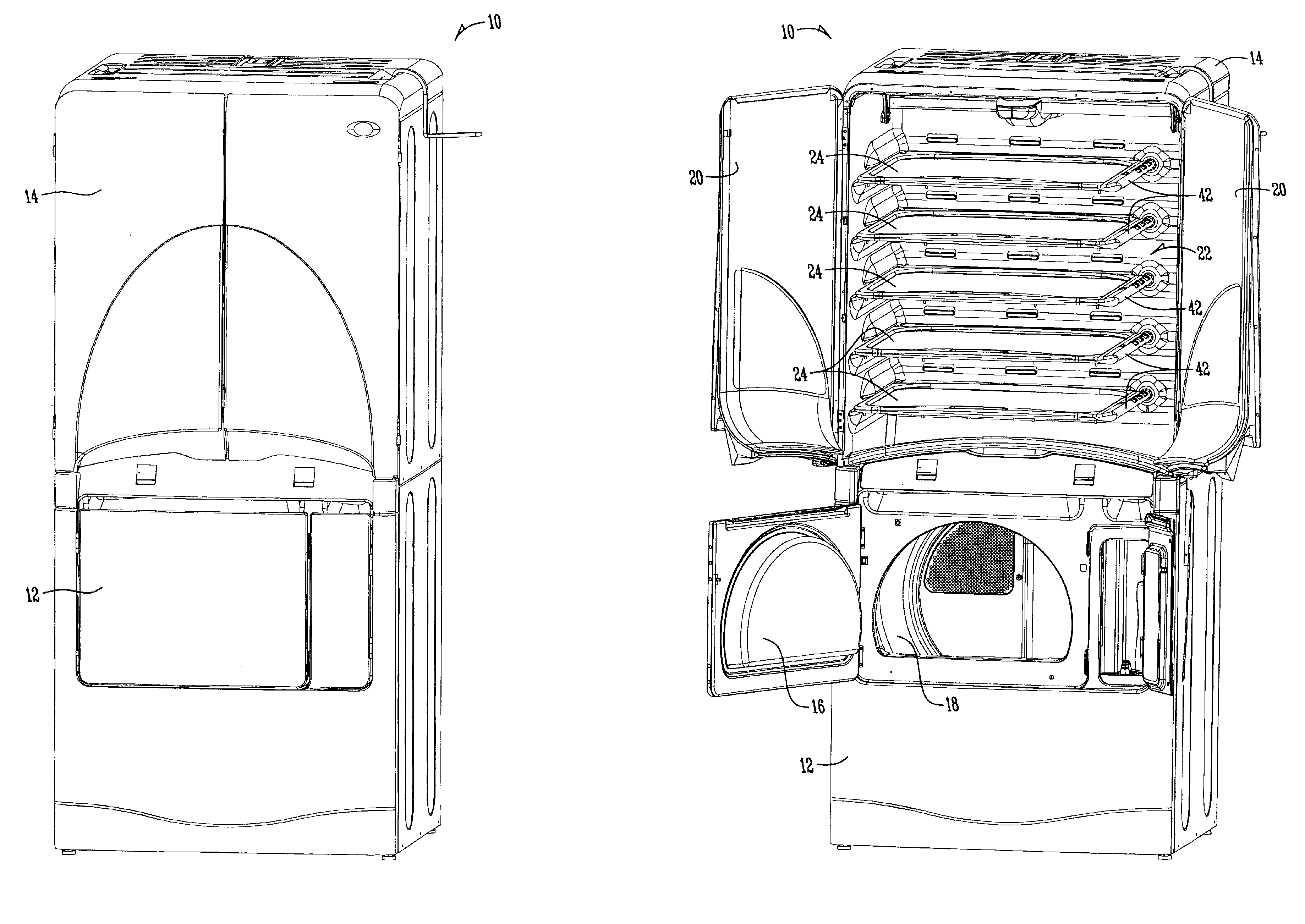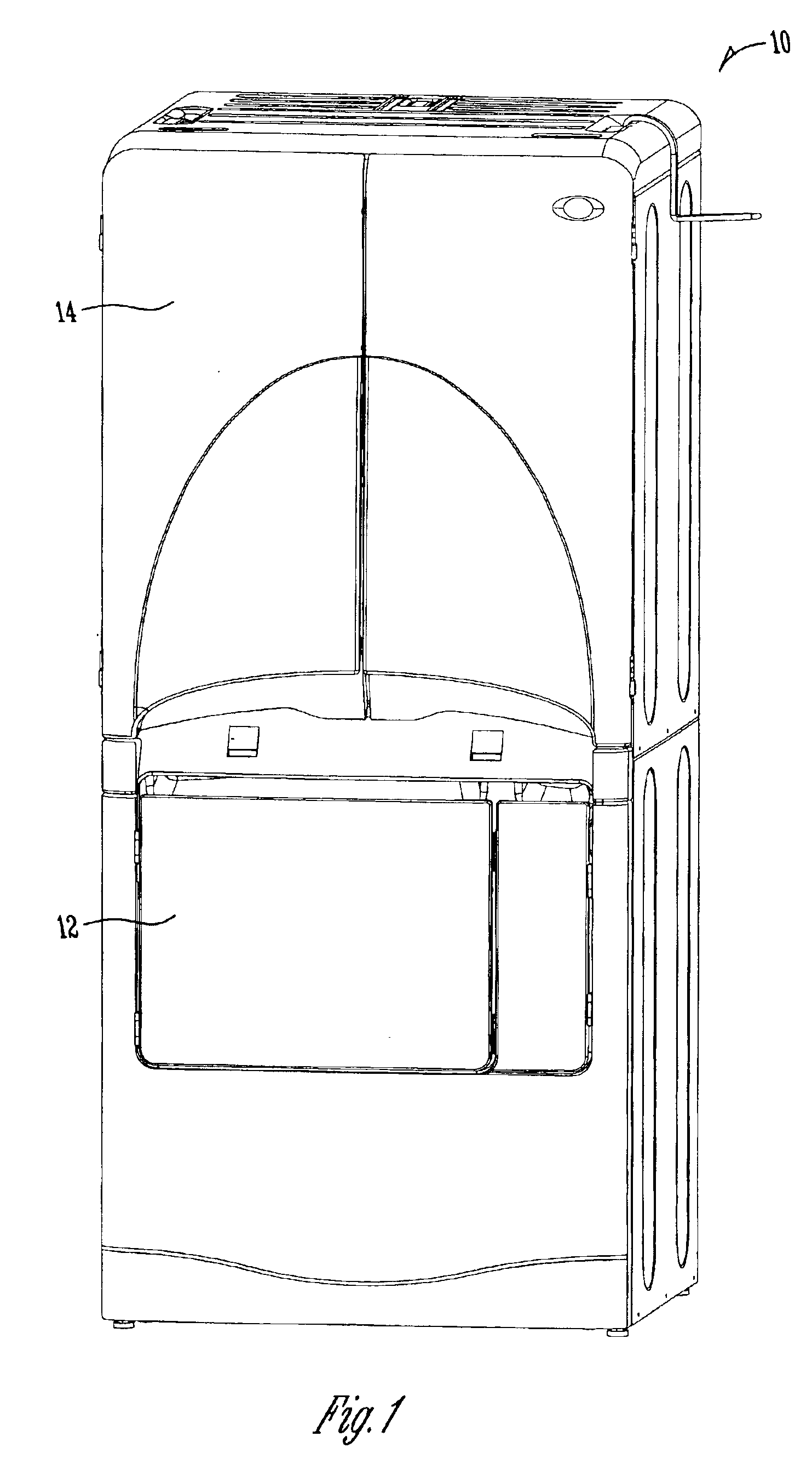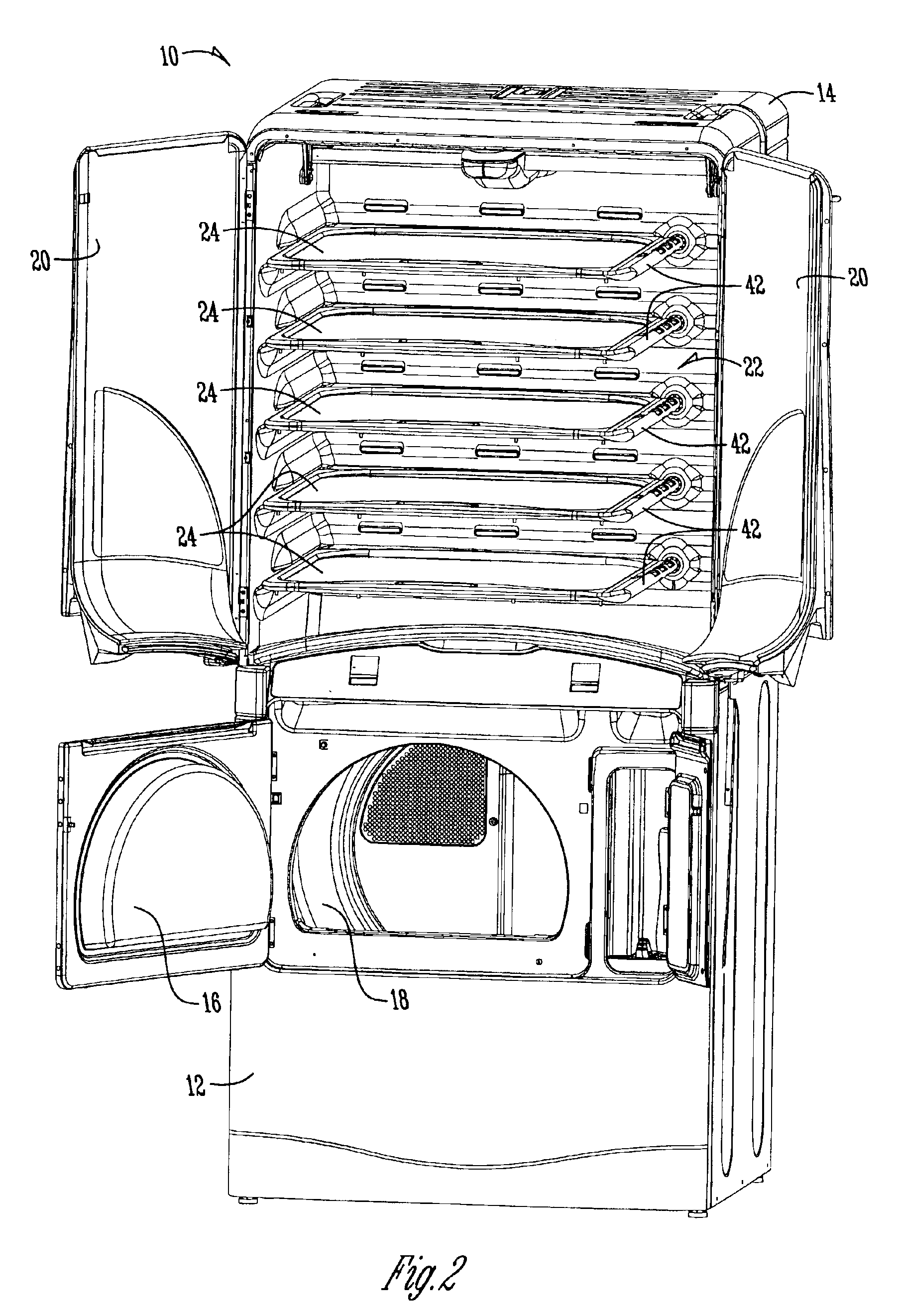Clothes drying cabinet with improved air distribution
a drying cabinet and air distribution technology, applied in the direction of drying machines, dryers, clothes, etc., can solve the problems that conventional drying cabinets generally do not provide a balanced air flow through the cabinet, and achieve the effect of enhancing the drying of objects laid on the shelves and constant air flow velocity
- Summary
- Abstract
- Description
- Claims
- Application Information
AI Technical Summary
Benefits of technology
Problems solved by technology
Method used
Image
Examples
Embodiment Construction
[0024]FIG. 1 shows a combination clothes drying machine 10 having a tumble dryer 12 and a drying cabinet 14. The drying cabinet 14 is shown to be mounted on top of the tumble dryer 12, though it is understood that other configurations can be provided. The tumble dryer 12 includes a door to provide access to the rotatable drum 18.
[0025]The drying cabinet 14 includes a pair of doors 20 which provide access to a drying compartment 22. As seen in FIG. 2, the compartment 22 may include removable shelves 24, which preferably have a mesh support surface so that air can circulate therethrough.
[0026]The compartment 22 is formed by a liner 26, best shown in FIG. 3. The liner 26 includes opposite side walls 28, 30, a rear wall 32, a top wall 34, and a bottom wall 36. The bottom wall 36 has a curved profile so as to extend around the drum 18 of the tumble dryer 12. The compartment 22 includes an elongated portion 38 adapted to receive long hanging items for drying, such as a dress.
[0027]A plura...
PUM
 Login to View More
Login to View More Abstract
Description
Claims
Application Information
 Login to View More
Login to View More - R&D
- Intellectual Property
- Life Sciences
- Materials
- Tech Scout
- Unparalleled Data Quality
- Higher Quality Content
- 60% Fewer Hallucinations
Browse by: Latest US Patents, China's latest patents, Technical Efficacy Thesaurus, Application Domain, Technology Topic, Popular Technical Reports.
© 2025 PatSnap. All rights reserved.Legal|Privacy policy|Modern Slavery Act Transparency Statement|Sitemap|About US| Contact US: help@patsnap.com



